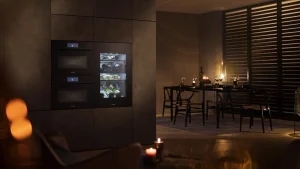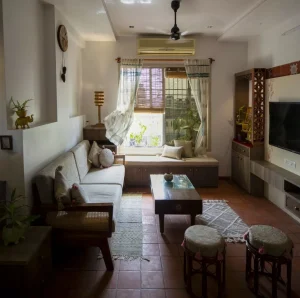
Let’s be honest. Living in a small space can feel like a constant game of Tetris. You’re always shifting, stacking, and trying to fit your life into a neat, compact block. And the bed? Well, it’s the biggest block of all. It just sits there, a giant, static rectangle claiming a huge chunk of your precious square footage.
But what if your bed could be more? What if it wasn’t just a place to sleep, but a secret storage unit, a home office, or even a guest room? That’s the power of customization and multifunctional design. It’s about transforming your biggest furniture piece from a space-hog into a space-hero.
The Core Philosophy: Why Your Bed Needs a Second Job
In a small apartment or a tiny house, every single item needs to earn its keep. The days of a simple bed frame and a mattress are, frankly, a luxury many urban dwellers can’t afford. The new rule is simple: if it doesn’t serve at least two purposes, it’s probably not the right fit.
Think of your bed not as a bed, but as a prime piece of real estate. It’s a platform, a foundation. And on that foundation, you can build an entire ecosystem for your life. This mindset shift is everything. It turns a problem into your most creative opportunity.
Multifunctional Bed Designs: Your Toolkit for Tiny Living
Okay, so let’s get into the nitty-gritty. What are the actual options? Here’s a breakdown of the most effective multifunctional bed designs for small spaces.
The Storage Powerhouse: Platform Beds with Drawers
This is the classic, the workhorse. A platform bed with built-in drawers solves the “where do I put my stuff?!” panic that small spaces induce. It’s like giving your bed a basement. You can stash off-season clothing, extra linens, books, or even your secret snack stash.
Honestly, the key here is customization. You can opt for deep drawers on one side, shallow ones on the other, or even a mix. Some designs feature lift-up hydraulics at the headboard for bulky items, with drawers below. It’s all about using that often-wasted vertical and under-mattress space.
The Ultimate Space-Saver: The Lofted & Murphy Bed
If you’re really serious about maximizing floor space, these are your champions.
Loft Beds: By elevating the sleeping area, you free up the entire floor beneath you. This isn’t just for kids’ rooms anymore. For adults, that space becomes a home office with a desk, a cozy reading nook, a dressing area, or even a compact living room. It’s like adding a whole new room without moving a single wall.
Murphy Beds (or Wall Beds): The magic trick of furniture. By day, it’s a sleek cabinet or a blank wall. By night, it’s a comfortable, full-sized bed. Modern Murphy bed systems are surprisingly elegant and easy to use. Many integrate with shelving, desks, or sofas, so when the bed is up, the room feels complete and intentional, not like a bedroom in hiding.
The Transformative Marvel: The Sofa Bed & Daybed
For studio apartments, the sofa bed is a non-negotiable. But forget the lumpy, back-breaking pull-out couch of the past. Today’s designs are sleek, comfortable, and genuinely stylish. A high-quality sofa bed allows your main living area to seamlessly transition from day mode to night mode.
Daybeds offer a similar versatility. They function as a couch for daily use and can easily be converted for sleeping, often with the addition of a trundle bed underneath for guests. They have a lighter, more airy feel than a bulky sofa bed, which can be perfect for certain aesthetics.
Customizing Your Sleep Sanctuary: Beyond the Frame
The frame is just the start. True customization for small space living comes from the details—the built-ins and the hacks that make the space uniquely yours.
Built-in Shelving & Nightstands
Instead of cramming clunky nightstands on either side of the bed, build the surfaces in. This could mean shelving that extends from the headboard up the wall, or a single, continuous platform that runs the width of the bed. It eliminates clutter, creates a clean line, and gives you a designated spot for your lamp, phone, and that glass of water without eating into your walking space.
The Integrated Workspace
With remote work here to stay, a dedicated desk is crucial. But where do you put it? Simple. You build it into the bed. For a loft bed, the desk naturally fits underneath. For a platform bed, you can extend the frame to include a built-in desk at the foot or side of the bed. It creates a distinct “zone” for work without requiring additional floor space. It’s a game-changer.
Choosing the Right Multifunctional Bed: A Quick Guide
| Your Primary Need | Best Bed Type | Key Consideration |
| Maximizing Storage | Platform Bed with Drawers | Measure drawer depth and ensure smooth glides. |
| Creating a Separate Living Area | Loft Bed or High Sleeper | Check ceiling height; you need ample clearance underneath. |
| Studio Apartment Flexibility | Murphy Bed or Sofa Bed | For Murphy beds, ensure wall studs are reliable. For sofas, test the mattress comfort. |
| Frequent Overnight Guests | Daybed with Trundle | Look for easy-roll trundle mechanisms and comfortable mattresses. |
The Final Thought: Reclaiming Your Space
Customizing a bed for a small space isn’t just a decorating project. It’s a declaration of independence from the constraints of your floor plan. It’s a clever, almost subversive way to tell your home, “You will work for me.” By embracing multifunctional design, you’re not just finding a place to sleep. You’re designing a smarter, more fluid, and ultimately more personal way to live.
The goal isn’t to make the space feel bigger, necessarily. It’s to make it feel exactly the right size for the life you want to live inside it.







